
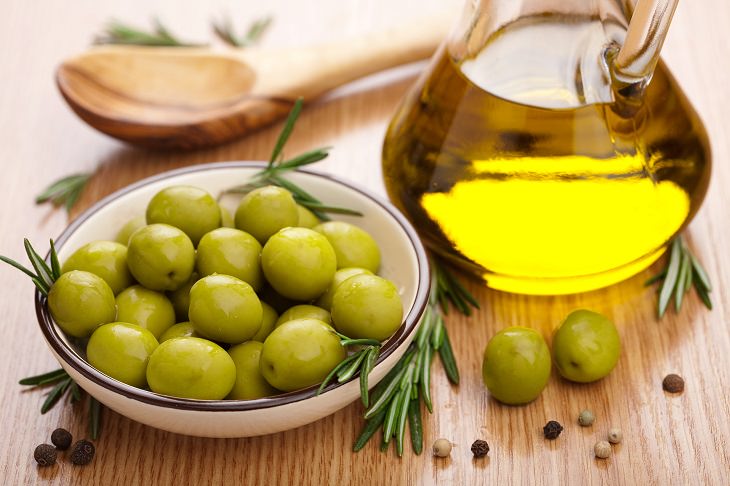
Studies have been conducted on the purity of olive oil to the point that consumers don’t always know if they’re purchasing a legit product. We know it’s good for us, but things can start to get confusing when it’s time to buy some. For example, some extra virgin olive oils are cut with other oils such as soy or sunflower.
You don’t always know what you’re getting, but there is a way to separate the reals from the frauds – your senses!
According to olive oil expert Katerina Mountanos, you should start with the smell and then move onto the taste. A quality olive oil should have a scent like fruits, grass, herbs, or plants.
Here’s what she suggests you should do:
- Pour a bit of the oil into a small glass and cover the top with your hand.
- Swirl the oil around in the glass, making sure that your hand is warming it gently.
- Remove your hand and have a quick sniff.
You’ll want to look for notes of tomato, almonds, fruits, or something peppery such as arugula. No smell, a waxy scent, and a vinegary scent are bad signs. However, the ultimate test lies in tasting it.
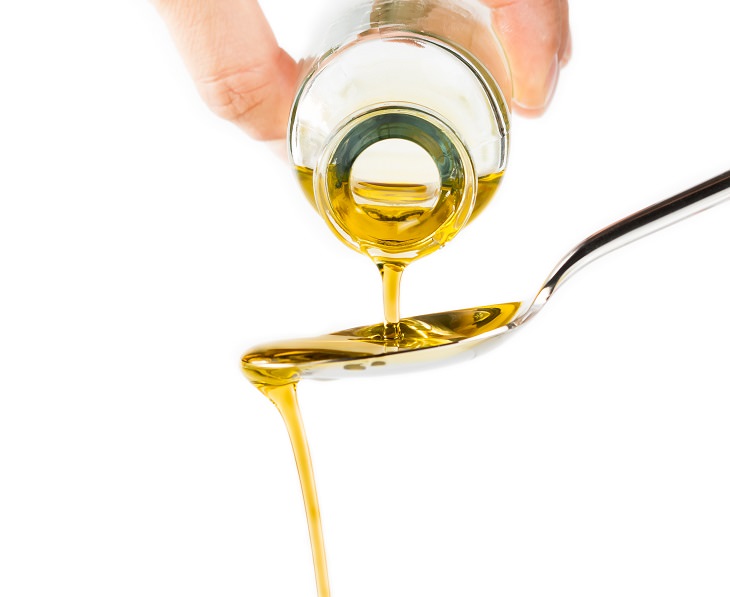
Mountanos has developed a science to tasting olive oil that involves a bit of swirling, inhaling, and coughing. If you’re down, here’s what to do:
- Swirl it around in the glass and then take a tiny sip.
- Inhale a little bit of air through your lips.
- Swish the oil around, and then swallow it.
It should taste like plants, but according to Mountanos, the kicker is that you will cough after experiencing a bitter aftertaste in the back of your throat. If you do, this is the sign of a great-quality, real-deal, extra virgin olive oil. She says that if the cough or other weird feeling in your throat doesn’t appear, you either have an oil that’s rancid or a low-quality imposter. There’s even a chance that it’s not even olive oil, let alone extra virgin.
Once you have found the perfect olive oil, you want to make sure that you store it in a cool, dark area where heat and light cannot destroy it. If you notice an off-putting odor, get rid of it.
A study from 2011 by the University of California-Davis concluded that 70% of olive oils sold in the U.S. did not meet the standards for being classified as extra virgin. Now you have your own way to test!
Source: tiphero
Images: depositphotos

Feeling Dizzy? Here Are 9 Common Causes!
Dizziness affects both adults and children, but the reasons for it could be something minor or serious. Here are 9 reasons you might be feeling dizzy!

Feeling Down? These 10 Foods Can Help Improve Your Mood
The food that we eat can help increase our moods and get rid of depression. Find out more here!

Here's How You Can Keep Your Mind Sharp At Any Age...
Everyone has a tendency to be a little forgetful. Here are 7 exercises that will help keep your mind sharp at any age.

If You Have a Dog, Here's How Apple Cider Vinegar Can Help
Not many people are aware that you can use apple cider vinegar for their dog. Here's how!

11 Simple Health Hacks to Change Your Life for the Better
To get healthy quick, all we need to do is follow these instant health upgrades. Take a look!

Fake Olive Oil: Here's How You Can Spot It
If you want to know whether the olive oil you have bought is real or an imposter, here's how you can tell!
 2:20
2:20
Gentle Bull Has Special Bond With Woman Who Raised Him
This great big bull is more like a teddy bear than a scary behemoth. Watch and enjoy the cuteness overload!

Cuticle Oil: What It Is and How to Make Your Own
Cuticle oil is a skincare product that can work wonders for the health and appearance of your nails and the skin surrounding them. You can purchase ready-made cuticle oil in stores or online, but making it at home is simpler than it seems.

WARNING: If You Love Dogs, This Information is Vital
If you're a dog lover, you should spread this information around. Don't feed dogs these common foods!

Have A Stain? Here's How to Remove It Quickly and Easily
We all have occasional "food accidents" that leave stains on our clothes, but you can remove the 18 most common food stains using the following simple methods.

11 CLEVER Ways to Repurpose Your Old Toothbrush
Have an old toothbrush lying around the house? Don’t toss it away yet!

10 Ways to Beat a Car Dealer and Save Yourself Some Money!
Are you considering buying yourself a new car. If so, knowing these simple tricks could end up saving you a considerable sum of money.

62 Great Uses For Things You Have at Home!
If you keep finding random objects around your house such as rubber bands and old clothespins, don't throw them away just yet!

The 5-Hour Rule: Successful People’s Best Kept Secret
While many want for success, few are able to achieve it. This 5-hour rule will help get you on the right track!

Full Guide: How to Take Care of Your Food Containers
Food containers are essential kitchen items, and with the right care, they can last for years. Learn some indispensable tips in this article.

10 Neat Kitchen Tricks and Hacks Every Cook Must Know
Neat tricks to help around the kitchen

Green Noise: A New Sound for a Better Night’s Sleep
You’ve likely heard of white noise, but have you tried green noise?

25 of the World's Best Beauty Remedies You've Been Seeking
Add these beauty remedies from around the world to your daily regimen.

How to Take Fewer Trips to the Grocery Store
Struggling to visit the grocery store way too often, in light of the Covid-19 pandemic? These tips will help you shop for food more seldom...

13 Ways to Reduce Annoying Household Noises for Good
Try these practical strategies to tackle the most common sources of noise in your home.

Been Stung by a Bee? Treat It With These Home Remedies!
Bee stings are a nuisance and can even be deadly if you're allergic to bee venom. Here are some home remedies that'll help to treat a bee sting.

20 Things You Can Do When You're Feeling Anxious
Stress can poison our daily life, but there are some small ways reduce it you can easily try.

When on a Flight, Avoid These 8 Things....
To help you stay healthy and comfortable during your next flight, here are some crucial tips to keep in mind.
 11:15
11:15
22 Gross Things You're Forgetting to Clean
Finding no less than 22 hidden places most of us never clean, Brittany shows us how to find and clean them all!

Do You Have Hair Problems? Try This DIY Rosemary Hair Wash
Did you know that rosemary, that great herb, is an invaluable weapon to help protect your hair from split ends, loss and other concerns? Read about it here.

Smart Ways To Do The Dishes More Effectively
These 15 tips will help you keep your kitchen crystal clear and sparkling clean. It also ensures all your dishes have been cleaned in the most hygienic way possible.
 4:21
4:21
Tips On How to Clean a Flat-Screen TV Screen the Right Way
Clean your flat-screen TV the right way by following these tips.

10 Indoor Plants That Thrive in Small Spaces
There is a great number of indoor plants that will make your home or office pretty and the air indoors fresher and cleaner but require very little space

10 Smart Ways to Treat Your Dry Skin!
Suffer from dry skin? You can find these next natural dry skin treating ingredients right in your home...

12 Sneaky Fees You’re Paying (and How to Stop Them)
Here’s a look at some of the most frustrating hidden fees you are paying and what you can do to avoid them.

12 Tips to Maximize Counter Space in Small Kitchens
These hacks will transform your kitchen counter space.
 15:30
15:30
Live an Easier Life With These 24 Everyday Tips!
This video offers 24 different tips for everyday problems.

How to Clean Those Ugly Water Spots from Your Car
Ugly water spots on your car are a real nuisance. But if you know what to do, getting rid of them isn't too tough. Here are several effective tips.

Important! These Everyday Objects Need to Be Cleaned!
There are certain things in our homes that we forget or don't even know we need to clean, so here are 15 everyday items that you should clean today.

Here's How to Reuse Your Old Pill Bottles in Creative Ways
There are plenty of things that you can do with a pill bottle after it has been cleaned and sanitized properly, and here are 15 of my favorite ideas.

Best Soaps for Different Skin Types: A Science-Backed Guide
Our goal is a scientific yet easy-to-understand overview, with real examples of recommended face and body soaps for each skin type.
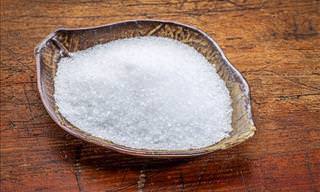
18 Reasons Why You Should Always Keep Epsom Salt at Home
People often add Epsom salt to their baths. However, it has many other uses and health benefits - here are 18 of them!

Watch Out! Is Your House Being Watched by Robbers?
Is your house being watched by robbers? Watch out for these 10 crucial signs.
 25:38
25:38
These Hidden Airplane Features Can Save Your Life!
The next time you board a flight, make sure you remember these tips.

8 Mistakes Most of Us Make When Brushing Our Hair
It turns out there are all sorts of small mistakes we make while brushing our hair that can significantly damage it.

The Morrocan "Liquid Gold": All You Need to Know
If you're looking for a natural, effective, and economical solution that can replace several beauty products in your cabinet, it's time to discover the 13 amazing uses of argan oil.

Suffering From Chronic Pain? These Tips Can Help Manage It
If you're suffering from pain, these mantras and mental tricks can help immensely in pain management and reducing the accompanying stress

Thanks to This Tip Your Flowers Will Look Much Better!
Learn the simplest and best trick for arranging your flowers with 3 tools that everyone has at home.
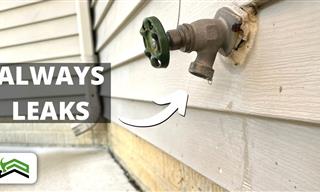 8:02
8:02
Tutorial: How to Fix A Leaking Outdoor Faucet
This video shows how to repair a leaking outdoor faucet.
 9:41
9:41
8 Natural And Safe Ways to Keep Ants Away From Your House
Take note of these useful natural remedies that can help you keep ants away from your home.

The 12 Perfect Rose Bushes for Beginner Gardeners
These wonderful roses require minimal maintenance, which makes them perfect for beginning gardeners!
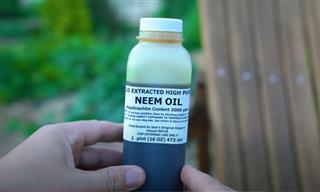 9:37
9:37
Why Every Gardener Should Have a Bottle of Neem Oil
Neem oil is a natural, plant-derived substance capable of treating and preventing several kinds of plant pests and diseases.

Warning! Don't Fall For These Common Marketing Tricks!
Here are ten common marketing ploys that you should be aware of, which will help you spend your money in a more informed manner.

Your Morning Routine Can Be Making Vitamins Less Effective
Here's a look at three supplements you might want to rethink taking with your morning coffee, along with practical tips to get the most out of them.
To enable your Ad-Free Subscription, please fill the fields below
Your subscription was successful, now you can enjoy an ad-free experience!! Note: To make sure you get no ads, please make sure to log in to your account. If you are logged in already, then refresh the page. The subscription can be cancelled at any time.


